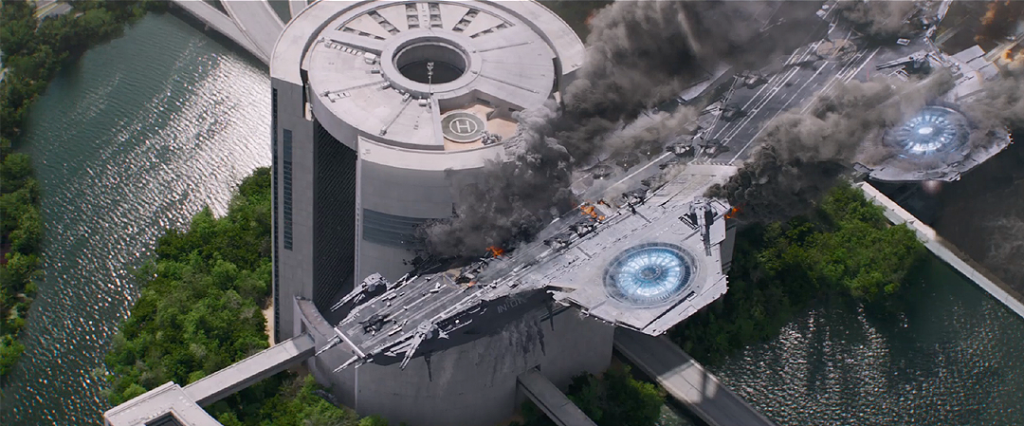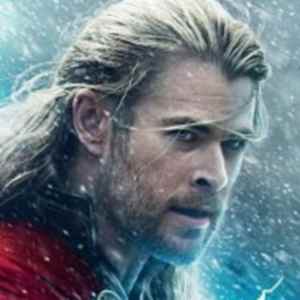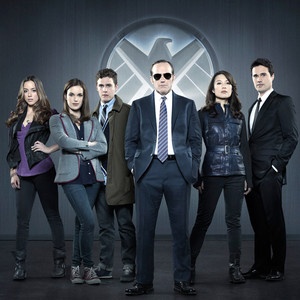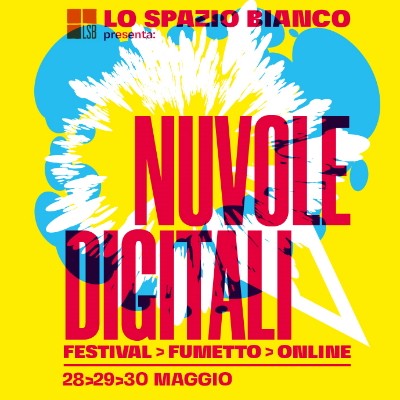We present an exclusive interview to Erin Sarofsky, President, Owner and Executive Creative Director of Sarofsky Corp.. a company specializing in live action production, visual effects, 3D development, design, animation who worked on main and end titles for the last Marvel Studios movies, including Ant-Man, Captain America: The Winter Soldier and Guardians of The Galaxy.
Welcome to Lo Spazio Bianco. Could you start by introducing yourselves to our readers and explain them what Sarofsky is?
I am Erin Sarofsky, the owner and executive creative director at Sarofsky (very clever company name, eh?). Sarofsky is a design-driven production company… but truth is, not everyone knows what that means. It’s just something I started saying to try and sum up what we do. The long and the short of it is that we produce our work using live action, visual effects, 3D development, design, animation and editorial. We do it for clients in both the commercial and entertainment arenas.
On the commercial side, we are known for our sophisticated design and VFX sensibilities, like in this Absolut commercial and our work on 5 Gum, which entails just the branded elements like the type and end tags. On the entertainment side, we do a lot of main titles for TV and film. My favorite of our TV main titles are Community and Shameless … And our most well know feature main titles are for Captain America: The Winter Soldier and Ant-Man.
In a nutshell, Sarofsky is a collection of artists and producers that are problem solvers. Everyday we have clients call us with an ask, and it’s for us to come up with the fastest, likely cheapest*, and most innovative and beautiful way of producing it.
* I’m not saying we are cheap. Actually, we are quite pricy, but budgets are what they are and we need to maximize the money clients have. We like to make sure it winds up on screen and not wasted.

How did your collaboration with Marvel Studios begin in the first place?
In 2008, I met Anthony and Joe Russo when they were working on Community. They, along with Dan Harmon and the team, commissioned us to produce that main title sequence. Since then, we had collaborated with them on so many TV jobs that when they landed the gig at Marvel to direct Captain America: The Winter Soldier… I did a selfish happy dance. It’s every designer’s dream to work on a main title like that.
Turns out, however, it’s not so easy to get into the Marvel Universe. While we had a great relationship with the Russos, the executive team at Marvel had no idea who we were and were understandably cautious about working with new people. Not only is the pipeline different for films than TV (Marvel has a particularly challenging pipeline: 4K stereoscopic, with specially designed LUTs by Technicolor for starters), they also have the most strict security requirements of any production… as well as the obvious: really high creative standards.
Anyway, despite all their skepticism, The Russos vouched for us… so they invited us to pitch on the main titles for Captain America 2. It was an intensely competitive pitch. With nothing to lose, we accepted the opportunity and went all in. The stars aligned and we had a direction that everyone really liked and so they gave us the job. I always wonder about that conversation they had; they must have been so nervous giving us a shot to produce this work. It’s one thing to be great designers… it’s another to be able to produce it!
Since then, we have worked with Marvel on Guardians of the Galaxy (James Gunn) and Ant-Man (Peyton Reed). It makes me so proud that the executive team at Marvel introduced us to their other directors. There is no greater compliment than that!
Anyway, that’s a long-winded story to just say we had an existing relationship with the Russos. But I think it’s important to understand two things. First, relationships matter. Taking care of your clients is important, because as their careers evolve, yours can evolve along with them. And second, to really make it, someone has to give you that uncomfortable first opportunity. You have to respect the risk they take and work super hard to live up to that incredible leap of faith they made. 
We loved the opening animation in Ant-Man. It seems it’s inspired by the Power of Ten of the Eames. Is it really like that?
Ab-So-Lutely! We were very inspired by the Eames film. Luckily though, our universe is the Marvel Universe… so being 100% accurate was not necessary.
About Ant-Man, we also loved the work with the mathematical modeling you used to produce the animation and we think it would be quite interesting to elaborate about the actual realization method. How does it work?
We actually worked in reverse. We planned our moves and then did the math after the fact. We used the surface of the grass as our zero; anything above that is positive and anything below is negative.
Andy Zazzera, CG Director on the job, and our wicked smart math guy did all the estimations. (Again, nothing is exact because our world is fake… but the math is legit).

How many people did work on the titles of “Captain America: The Winter Soldier” and “Ant-Man”? What kind of tech did you use?
In “Captain America: The Winter Soldier” titles the black and white effect, the red shades to remind Hydra and the clear tribute to Jim Steranko were really striking. How did you create this beautiful sequence?
On both Captain America: The Winter Soldier and Ant-Man, we had about 25 people working on it in various capacities. Both projects were composited in The Foundry’s Nuke and finished out of Autodesk’s Smoke. We used Cinema 4D exclusively to create all the 3D on Ant-Man and used it on some of the scenes on Captain America. We also used Softimage for a bunch of the 3D work on Captain America.
The look of the MOE for Captain America draws inspiration from both Steranko and Bass. If you really look at Steranko’s work next to ours, the minimal color palette and characters (which were masterfully created for us by David Mack) totally relate, but we really simplified the compositions as far as we could. That relates more to Bass’ work than Steranko’s.
It’s my hope that even though there are clear influences, we have created a piece that stands on its own. The goal was for it to be sophisticated and well crafted enough to feel modern, but that it clearly harkens back to main titles that you’d see on spy-thriller movies in the 60’s.

The music plays a fundamental role in your work. Are there any particular consultations with the music composers of the movies you usually take part in?
On the Marvel work, these guys are so good that they build an arch right from the get go. There can be some back and forth… but there seems to be a lot of serendipitous alignments that happen straight out of the gate. It’s likely because they’ve done it so many times that it’s just intuitive. Also, the guys that compose these films do the main title, so there is no question about tone.
The TV main titles mostly come with a music track attached that we animate to… though sometimes there is some wonderful back and forth. We had a great experience on our titles that we did for The Killing. We Fell to Earth was super collaborative and just lovely to work with.
With commercials, it’s such a mixed bag. Sometimes we work with sound designers, composers and all sorts of musicians… and sometimes the agency keeps us totally out of the loop.
I agree it’s a really important aspect of our work. In general, I love having involvement… But music is even more subjective than design. So sometimes it’s nice to just nod and smile.

What were the reactions of the fans? How much did their opinion influence your work?
You know, I love when people talk about our work (good or bad comments), but I feel like design is so subjective that your opinion is just that: your opinion. Any outside comments happen without any insight into our process. So they have no idea what the review process, budget, schedule or resources were like. It could have been a nightmare behind the scenes… so you just don’t know what you don’t know.
But ultimately, when you put work out into the world, you do it without those disclaimers. Knowing that, any negativity is super easy to brush off.

Are you going to work with Marvel Studios in the near future?
We are very tight-lipped about any unreleased work because of the security requirements. However, I can say that our relationships with Marvel, The Russos, James Gunn and Peyton Reed are all still very, very good.
In addition to movies inspired by comics, what are your next projects?
I am hoping that all this Marvel work will lead to commercial work of the same caliber. There are a lot of commercials produced… Only a small percentage of them are design driven… And of those, an even smaller percent have amazing creative. So it’s my hope that we start to get sought out to do some of that cutting edge work. (It seems like it’s working, too. This year we’ve already had a few inquiries that have really sparked our interest!)










